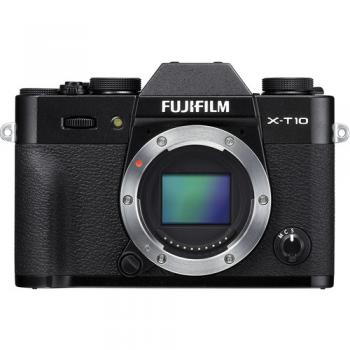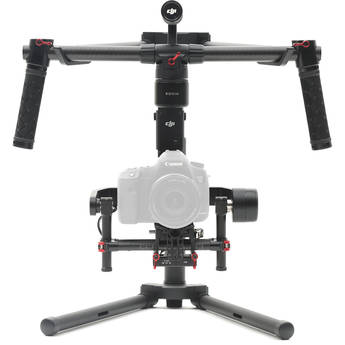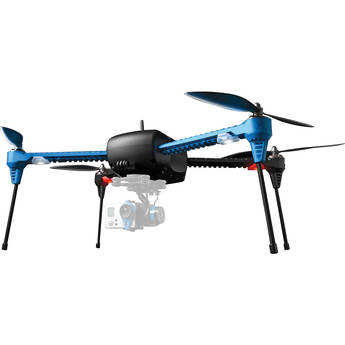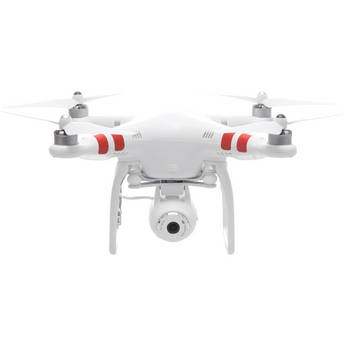Monday, September 7, 2015
Exploring Minimalism
It’s easy to associate photography with portraits of people and sprawling landscapes, but have you ever considered chopping out extraneous details to tell a simple, yet powerful story? Minimalist photography seeks to capture subjects in extreme focus, eliminating the background noise of more conventional photography techniques. Perform these minimalist exercises with your digital camera and learn the true meaning of “less is more”.
Wednesday, September 2, 2015
Life in Auto: Easing into Your SLR
When you finally make that leap to taking pictures with SLR, one of the first things you’ll probably hear is “get out of Auto Mode.” This piece of advice isn’t unfounded; the only way to truly maximise your SLR is to explore the various settings to take your photography to the next level. However, if you’re just starting out, there’s definitely no shame in spending some time in the carefree arms of Auto Mode. When you’re starting out, it’s just as important not to pressure yourself, have fun, and just get comfortable taking pictures.
For more tips on maximising your SLR experience, visit our blog: http://blog.slrhut.co.uk/
Get a Grip
Taking some time in Auto Mode allows you to focus on the fundamentals, and that includes proper posture and maintaining a steady grip on your camera. The value of learning how the weight of your machine feels in your arms, and how your hands and fingers contour around it cannot be emphasised enough. Getting to know your SLR at this basic level will help you take better pictures in the long run.Try Some Angles
Even without worrying about exploring the myriad adjustments, it’s important for any photographer to develop a good eye for composition. Fine tuning the settings will get you the subtle effects that add up to a more dramatic shot, but a good eye will identify a moment when it happens. Auto Mode does away with the burden of so many details, and frees up your imagination.In Time, Move On
It’s important to know when to take the next step. Be aware that while Auto Mode is OK, there’s a whole world of discoveries beyond it. Once you’re comfortable with your SLR, try out the other configurations and camera lenses so you can create even stronger stories with your photography. Just remember: there’s no need to rush into everything all at once!For more tips on maximising your SLR experience, visit our blog: http://blog.slrhut.co.uk/
Friday, July 24, 2015
Capture London in High Def
Whether you’re filming a short movie or capturing typical London scenery, the Canon Legria HF G30 camcorder is right for you.
The flagship Legria HF G30 camcorder packs high-specification optics, sensor, and stabilizer, plus Wi-Fi connectivity, into a compact body; it is ideal for enthusiasts to match their creativity, allowing them to capture professional quality videos.
The Intelligent Image Stabilisation combats camera shakes, by automatically selecting the right optical image stabilization from 4 moves to counteract movement and prevent blur. The advanced dynamic mode corrects roll and tilt movements that can occur when walking, ensuring sharp steady videos in every situation.
The Instant Auto Focus provides fast and accurate focusing for razor-sharp HD quality. Face detection automatically optimises camcorder settings for perfectly-focused and exposed shots of people.
Other Features:
● 20x zoom, 26.8mm wide-angle lens; 8 blade circular aperture
● Control settings remotely and share video with Wi-Fi
● Simultaneous recording of AVCHD and MP4
● Canon HD CMOS PRO sensor
● Full manual control
● 8.8cm OLED touch screen
To learn more about the Canon Legria HF G30 camcorder, and make a purchase, click here: http://slrhut.co.uk/product/ID575C7/view
The flagship Legria HF G30 camcorder packs high-specification optics, sensor, and stabilizer, plus Wi-Fi connectivity, into a compact body; it is ideal for enthusiasts to match their creativity, allowing them to capture professional quality videos.
The Intelligent Image Stabilisation combats camera shakes, by automatically selecting the right optical image stabilization from 4 moves to counteract movement and prevent blur. The advanced dynamic mode corrects roll and tilt movements that can occur when walking, ensuring sharp steady videos in every situation.
The Instant Auto Focus provides fast and accurate focusing for razor-sharp HD quality. Face detection automatically optimises camcorder settings for perfectly-focused and exposed shots of people.
Other Features:
● 20x zoom, 26.8mm wide-angle lens; 8 blade circular aperture
● Control settings remotely and share video with Wi-Fi
● Simultaneous recording of AVCHD and MP4
● Canon HD CMOS PRO sensor
● Full manual control
● 8.8cm OLED touch screen
To learn more about the Canon Legria HF G30 camcorder, and make a purchase, click here: http://slrhut.co.uk/product/ID575C7/view
Monday, July 20, 2015
Handheld Digital Camera Stabiliser
The makers of the remarkable drones, DJI, have released the next generation of professional digital camera stabilisation gimbals – the DJI Ronin-M 3 Axis Handheld Gimbal. Featuring many of the same capabilities as the original Ronin, the new model is lightweight, compact, and has increased rigidity and stability.
What’s great about the Ronin-M is the compact design-- it is small enough to fit into your backpack to be taken anywhere, yet strong enough to support any digital camera weighing up to 8 lbs. The upgraded ATS (Auto Tune Stability) technology is more precise, and completes the tuning and balancing process without any tools.
The magnesium frame of the Ronin-M makes it lightweight, enhancing the shooting experience, while maintaining easy maneuverability and increasing options. Other Features:
What’s great about the Ronin-M is the compact design-- it is small enough to fit into your backpack to be taken anywhere, yet strong enough to support any digital camera weighing up to 8 lbs. The upgraded ATS (Auto Tune Stability) technology is more precise, and completes the tuning and balancing process without any tools.
The magnesium frame of the Ronin-M makes it lightweight, enhancing the shooting experience, while maintaining easy maneuverability and increasing options. Other Features:
- Can easily switch between 3 modes of operation, without adjusting any setting or needing a 2nd operator remote
- Long battery life, with up to 6 hours of shooting
- Brushless motors for precision control and low vibration
- Optional second operator for impossible shots
- Mounts to any digital camera To learn more about the DJI Ronin-M 3-Axis handheld gimbal, visit our store: http://slrhut.co.uk/product/ID760C73/view
Tuesday, July 14, 2015
Fly your Drone like a Pro
Flying a drone is fun but much harder than it looks. Like in the case of using digital cameras, we’re all amateurs at first. New pilots need to start with the basics before learning how to really master their flying.
Here are some tips on how you can fly your drone like a pro:
Do not go to manual mode too fast
Manual mode is meant for expert flyers. Learn how to fly at low altitudes first until you understand manual mode and then start flying higher. When in manual mode, the systems put in place to help make flying easier will not provide the extra stability you need, and you’ll probably take poor-quality shots, making you discouraged before you really get into drone photography.
Be aware of the weather
Wind is the downfall of most copters. If you notice 15 - 30+ KPH winds outside, you will not want to bring your quadcopter for a flight. Although there are some drones that have automatic correction for windy conditions, it is a rule of thumb to always check the settings of your drone.
Use GPS mode if available
GPS provides great flight advantages that the beginner and advanced pilot will be able to take advantage of from their very first flight. GPS mode also provides the major benefit of knowing exactly where your copter is located. If a crash does occur, you will be able to find the wreckage much easier if GPS mode is active.
Keep controls simple
As a beginner pilot, the controls that you need master are up, down, left and right. It is never a good idea to try doing a roll or flip for the first time when you’re outdoors and the weather is bad. Keep all of your controls as simple as possible.
Becoming a pro drone pilot requires getting to know your equipment, conditions, and mastering the basics. For a more advanced set of drones, visit http://slrhut.co.uk/search/?keywords=drones&page=2
Here are some tips on how you can fly your drone like a pro:
Do not go to manual mode too fast
Manual mode is meant for expert flyers. Learn how to fly at low altitudes first until you understand manual mode and then start flying higher. When in manual mode, the systems put in place to help make flying easier will not provide the extra stability you need, and you’ll probably take poor-quality shots, making you discouraged before you really get into drone photography.
Be aware of the weather
Wind is the downfall of most copters. If you notice 15 - 30+ KPH winds outside, you will not want to bring your quadcopter for a flight. Although there are some drones that have automatic correction for windy conditions, it is a rule of thumb to always check the settings of your drone.
Use GPS mode if available
GPS provides great flight advantages that the beginner and advanced pilot will be able to take advantage of from their very first flight. GPS mode also provides the major benefit of knowing exactly where your copter is located. If a crash does occur, you will be able to find the wreckage much easier if GPS mode is active.
Keep controls simple
As a beginner pilot, the controls that you need master are up, down, left and right. It is never a good idea to try doing a roll or flip for the first time when you’re outdoors and the weather is bad. Keep all of your controls as simple as possible.
Becoming a pro drone pilot requires getting to know your equipment, conditions, and mastering the basics. For a more advanced set of drones, visit http://slrhut.co.uk/search/?keywords=drones&page=2
Wednesday, July 8, 2015
What You Need to Know when Buying Drones and Quadcopters
Drones and quadcopters give photos and videos new angles for
enthusiasts. They are fairly inexpensive, they capture high-definition photos,
and many new models are coming out.
Before buying a quadcopter, consider these features:
Camera
While former models have needed a separate video camera or
GoPro, there are models now that have built-in cameras like the DJI
Phantom 2 Vision+.
Built-in cameras are lighter than most other cameras and are
more functional. Other considerations are resolution, the ability for the
camera to be controlled, and the range of the camera.
Range
The range that you can control the drone is very important. Knowing
the range is not so vital for casual users, but if you want to take aerial
footage, you will need to know the range at which you can control your drone.
Live feed
There are models that transmit the live feed over Wi-Fi and
may be able to be viewed from the controller or on a computer, tablet, or
smartphone. Controllers that have an LCD display will often have a feed that is
sent and allows you to see what the drone camera is capturing. When there is no
live feed present, footage can often be stored on an SD card or flash drive.
Battery Life
Whether the quadcopter is for personal use or professional
use, such as in real estate, the last thing you want is for your drone to die
mid-flight. The average time for a quadcopter to be functional is around 15
minutes before it needs to be charged on ground or have the battery replaced.
Height and Speed
The point of having a drone is to
capture a larger scene in one frame, so height is important. Often times, the
speed of the drone will be 15 - 25 KPH. If you’re capturing a sports game,
speed is an even bigger factor.
Aside from these factors, consider the design, weight,
warranty, and replacement option for parts of your drone. For a wide selection
of drones and capabilities, you can visit http://slrhut.co.uk/search/?q=drones
Tuesday, June 23, 2015
Your Masterpiece in Vivid Details
Each DSLR camera has a variety of features that makes photography even more fun and creative. We choose a camera to buy and use based on our wants and needs. There are a lot of features to consider and one of the most important is the pixel count. Cameras with a large number of pixels are more sensitive to light and that can help to produce a better image quality. But which DSLR camera stands out from the rest in terms of jaw-dropping image quality?
The Nikon D810 offers a massive 36.3 effective megapixels to flawlessly capture every shot you’ll take. The clarity of detail and the rich colors in each photo is simply amazing with Nikon’s innovative EXPEED 4 image processing. It offers unsurpassed detail retention, noise-free images from ISO 64 to 12,800, and well-saturated skin tones. The D810 captures 5 fps at full resolution in FX format that widens the range of shooting situations.
This camera is perfect for still and multimedia photographers including professionals in landscape, studio, wedding, and portrait photography. Cinematographers and camera operators will surely love the D810 because of its accurate autofocus, smaller file formats, fast frame rates and image processing, and outstanding energy efficiency that will let them create their masterpiece. If you are looking for the best in DSLR image quality, choose Nikon D810. Purchase one now at SLRHut and check out other digital cameras in great prices.
The Nikon D810 offers a massive 36.3 effective megapixels to flawlessly capture every shot you’ll take. The clarity of detail and the rich colors in each photo is simply amazing with Nikon’s innovative EXPEED 4 image processing. It offers unsurpassed detail retention, noise-free images from ISO 64 to 12,800, and well-saturated skin tones. The D810 captures 5 fps at full resolution in FX format that widens the range of shooting situations.
This camera is perfect for still and multimedia photographers including professionals in landscape, studio, wedding, and portrait photography. Cinematographers and camera operators will surely love the D810 because of its accurate autofocus, smaller file formats, fast frame rates and image processing, and outstanding energy efficiency that will let them create their masterpiece. If you are looking for the best in DSLR image quality, choose Nikon D810. Purchase one now at SLRHut and check out other digital cameras in great prices.
Subscribe to:
Posts (Atom)












.jpg)

